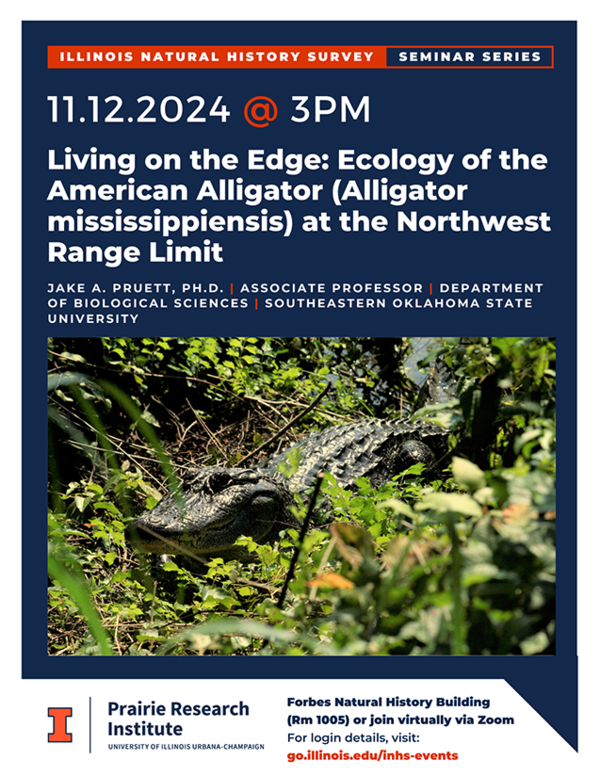
INHS Seminar | Living on the Edge: Ecology of the American alligator (Alligator mississippiensis) at the Northwest Range Limit
- Event Type
- Seminar/Symposium
- Sponsor
- Illinois Natural History Survey Seminar Committee
- Virtual
- Join online
- Date
- Nov 12, 2024 3:00 pm
- Speaker
- Dr. Jake Pruett, Southeastern Oklahoma State University
- Contact
- Dr. Suneeti Jog
- jog@illinois.edu
- Views
- 162
- Originating Calendar
- INHS Events
This seminar will be presented virtually on Zoom. Zoom URL: https://illinois.zoom.us/j/82517618634?pwd=X5pzZvwfKYdxGhbrWMP2EP1O7RCjpa.1 | Meeting ID:825 1761 8634 | Password: 818710
Abstract: Alligator populations were drastically reduced by overharvesting and habitat loss in the mid-1900s, but protection under the Endangered Species Act led to recovery throughout much of the historic range. Oklahoma lies at the northwest range limit of the American alligator, and while anecdotal accounts indicate the number of alligators in Oklahoma is increasing, little is known about the current population size and distribution. A 2-year study was conducted on alligators in the state of Oklahoma to assess the overall population status by surveying the population, monitoring of nesting effort and success, and documenting sources of mortality. Radio telemetry was also used to study movement patterns and habitat use of juvenile alligators at Red Slough Wildlife Managment Area (RSWMA). Very few alligators were observed outside of RSWMA, and it remains the only location in the state where reproduction has been confirmed. While the number of nests has increased in recent years, many offspring do not survive due to predation and extreme freezing events. Male and female juvenile alligators made small movements around their natal dens until eventually dispersing with some individuals moving long distances and venturing onto private land. Males and females occupied similar habitat, but multivariate analysis revealed differences between alligator and random locations and differences between years. Some of these differences are attributable to differences in rainfall and management practices between years.